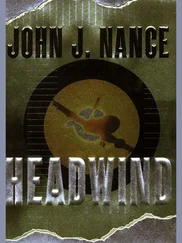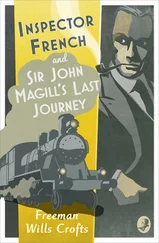John J. Nance
LOCKOUT

New York Times Bestseller
To Kathleen, with endless love and appreciation!
Praise for John J. Nance’s Lockout
“John Nance has added another intriguing volume to his body of work. This fascinating story of technology gone awry, rich with accurate detail, satisfies and terrifies as it takes the reader on a wild ride through the night sky on an airliner no one on board can control.”
— Captain Sully Sullenberger, author of #1 New York Times Bestseller SULLY, and MAKING A DIFFERENCE: Stories of Vision and Courage from America’s Leaders ; pilot of US Airways 1549, “ Miracle on the Hudson”
“Once again, John Nance has provided a Mach-speed, high altitude page-turner in the form of a modern-day aviation thriller. Packed into the flight plan of “Lockout” are very real challenges faced by today’s airline pilot. Captain Nance has done his homework. Both pilots and passengers will enjoy the suspense. Pay attention to the seat belt sign and buckle in!”
— Les Abend, Contributing Editor/ FLYING MAGAZINE, Contributor/ CNN.com, On-air Aviation Analyst/ CNN
October 2012
On approach to Anchorage International Airport, Alaska
Dan Horneman tried to relax his death grip on the control yoke, but the turbulence buffeting the Boeing 737 was alarming, and with every lurch his right hand squeezed harder.
There was no time to enjoy, or even look at, the snow-covered Chugash Mountains, a framed wonderland off to the right. He was barely hanging on.
Friggin’ testosterone test! Dan growled to himself. This flight wasn’t a formal checkride, but obviously Captain Tollefson had decided to see what the new guy was made of and whether he could hold his own against the always flawless airmanship of the Arctic Eagles—the name the airline’s experienced, Anchorage-based pilots called themselves. Dan had been warned about their superior attitude, a special self-appointed elite among Pangia World Airways pilots, and so far Tollefson was living the image precisely
And I had to pick one of the worst weather days of the year!
It wasn’t as if the whole hazing experience was a surprise—Jerry Tollefson had asked enough ridiculously overbearing technical questions before departure from Salt Lake to tip his hand. Slightly younger than Dan’s thirty-eight years and slightly shorter at five nine, Tollefson seemed like a decent sort, if a bit too sure of himself. But Dan fully expected to be grilled further during their layover. Clearly Tollefson had heard the rumors about Dan Horneman.
For that matter, who hadn’t?
From his left seat position, the captain was glancing over at Dan now with a smile, clearly enjoying the grim, determined look on his first officer’s face, and the arrogance riled Dan even further.
“It’s a mite breezy today, to say the least,” Jerry Tollefson said.
“No problem,” Dan managed, trying to force a smile, his throat feeling like cotton. It was his turn to land, and there was no question that any competent Pangia Airways copilot should be able to take any weather conditions in stride.
Yet…
Tollefson was leaning forward importantly, reading something on his forward computer screen as Dan reached to the glareshield and adjusted the airspeed selector, dialing in 160 knots, an electronic order to the autothrottles to maintain that speed. The landing gear was already down and locked and the flaps extended to thirty degrees—the final setting for landing. He was fighting to keep the Boeing 737 under control, the jet’s flight path moving them steadily toward the runway even though the nose of the jet was pointing almost twenty degrees to the left, crabbing into the wind. Their destination, Anchorage runway 7R—one of two parallel runways aligned with compass heading 070—lay three miles ahead, the threshold of the runway beginning on a small cliff some 300 feet above sea level. All afternoon it had been swept by a vicious wind from the north propelling snowdrifts across its 12,000-foot length. To make matters worse, the tower had reported poor braking on 7R, the only runway open and plowed. He might need every inch of the ice-covered surface to fight the airplane safely to the ground and slow her down.
“Winds are three-five-zero at twenty-two, gusts to thirty…” Captain Tollefson said, repeating the latest information from the tower. “That’s about a twenty-five knot crosswind component, and… our limits.”
“Got it,” Dan managed in a low croak.
The tower controller cut through his concentration with the final landing clearance, and Jerry responded in a routine tone of voice. “Pangia 113 cleared to land Seven-Right.”
The jet seemed to be settling, but its motion felt a bit strange, and Dan glanced at the airspeed indicator without registering the value. They were bouncing so severely it was hard to read any of the instruments.
He was behind the airplane, barely hanging onto her, like a terrified rider trying to stay on a runaway horse.
An interphone call chime from the flight attendants had reverberated through the cockpit moments before, and Dan’s brain was only now registering the fact that the captain had already pulled the interphone handset to his ear, his attention suddenly diverted.
“Smoke in the cabin? Where’s it coming from?” Tollefson asked.
From what Dan could hear of the exchange, smoke was curling from one of the restrooms in the back, and it was getting worse, which could mean a real emergency. Whatever the cause, it was now completely distracting the captain.
Dan doubled his concentration on the flight instruments, looking in momentary panic for the ILS, the Instrument Landing System indications, before remembering that the captain had turned it off.
“Dan, you don’t need the ILS or the flight director,” Jerry had said moments before, breezily playing the instructor. “Your runway is in sight and we’re cleared for a visual approach. Real simple, partner. There it is. Go land on it.”
For some reason, being cleared for a so-called “visual approach” hadn’t struck fear in his heart. At least not like it had before. He’d had almost no flight time in a real 737 since passing his rather pro forma checkride, and even that had been administered in a flight simulator safely bolted to a concrete floor. Not that he couldn’t fly manually, but what was upsetting him was the unnecessary loss of the Instrument Landing System’s guidance. He wasn’t used to flying a big jet visually, without the step-by-step procedures of what pilots called an instrument approach.
Dan glanced quickly at the captain. Mr. Macho over there seemed to love seat-of-your-pants flying. He half expected Jerry to turn around and snap off the autothrottles as well, which would force Dan to ride the throttles manually with his left hand to maintain airspeed. He was barely hanging onto the beast as it was!
The fleeting thought that he should make absolutely sure the autothrottles were, indeed, engaged crossed his mind. But the thought instantly fell victim to the avalanche of other stimuli cascading through his consciousness. Trying to figure out why the big Boeing seemed so sluggish and slow was taking center stage.
To Dan’s left, Jerry was still hunched over the center console with the interphone handset, trying to guide the flight attendants through the specific steps needed to isolate a cabin fire. Whatever was happening back there wasn’t getting any better, and Jerry was violating the sterile cockpit rule talking about other matters during a difficult approach—not that Dan wanted to challenge him on protocol. They might have to declare an emergency any second and ask for the fire trucks, but the immediate plan would still be the same: Land as expeditiously as possible on the runway just ahead.
Читать дальше













